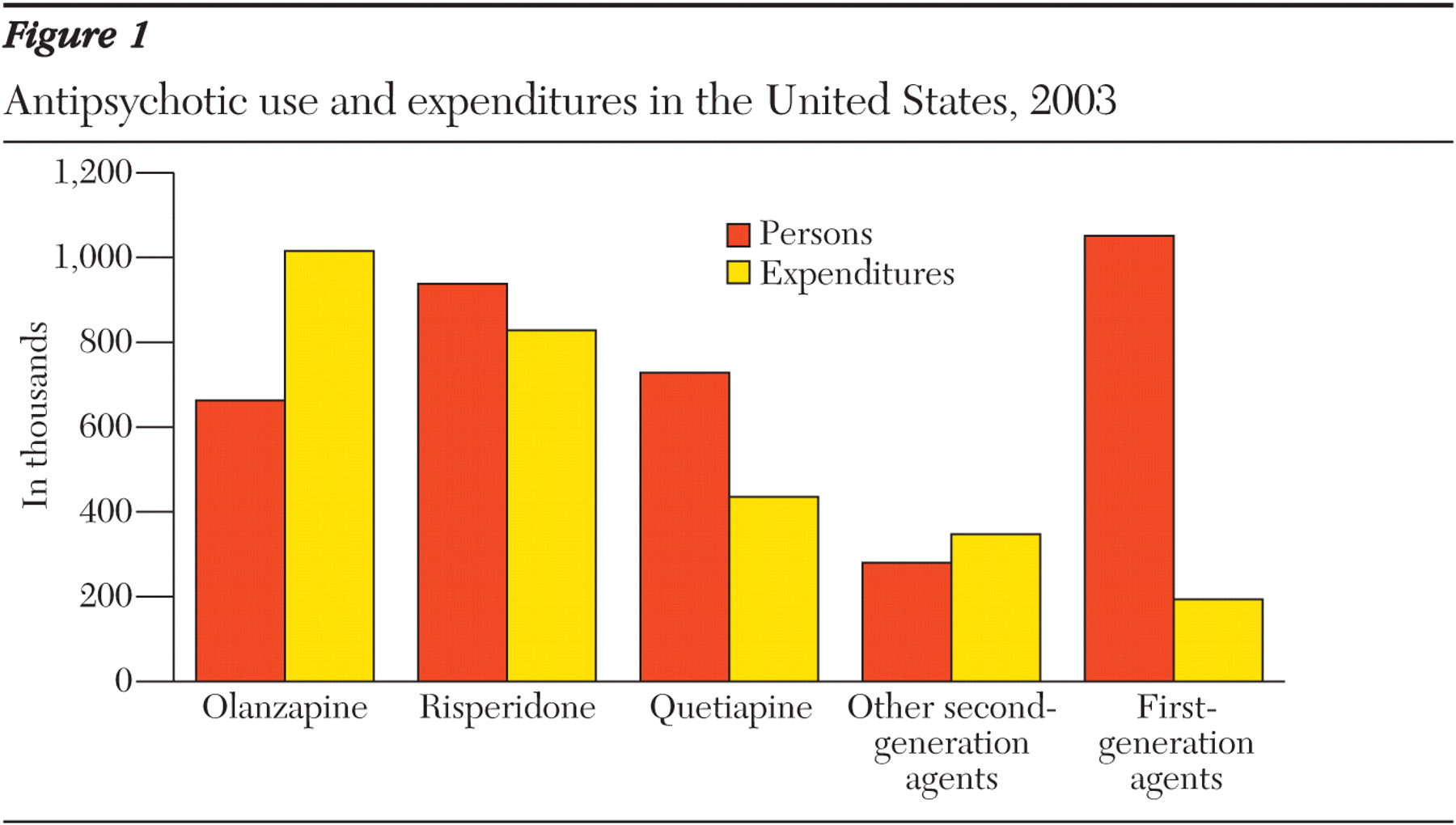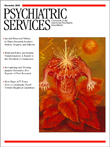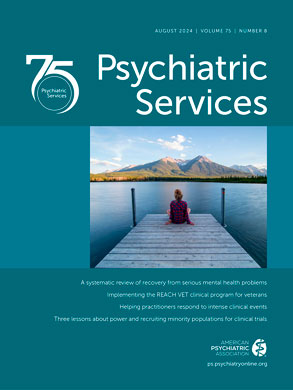Use of second-generation agents, which are considered to have a better safety profile than first-generation agents, has contributed to the increasing use of antipsychotic medications (
1 ). The Clinical Antipsychotic Trials of Intervention Effectiveness (CATIE) study found that second-generation antipsychotics (olanzapine, risperidone, quetiapine, and ziprasidone) and a first-generation agent (perphenazine) were comparably effective for patients with schizophrenia (
2 ). However, discontinuation rates were high with all antipsychotics for various reasons, which raises concerns about cost-effectiveness of the use of second-generation agents. In this column, we examine national utilization and expenditure patterns for antipsychotic medications, with an emphasis on second-generation agents.
The Medical Expenditure Panel Survey (MEPS) provides the most recent national estimates of health care use and expenditures for the U.S. civilian noninstitutionalized population. The public use data files from the household and pharmacy component of the 2003 MEPS were used for secondary data analysis (
3 ). As described elsewhere (
1 ) antipsychotic agents were grouped into first- and second-generation agents. National estimates were developed by using the sampling weights in the MEPS.
An estimated 3.21 million patients (95 percent confidence interval [CI]= 2.78-3.63) received antipsychotic agents in 2003. Second-generation agents were prescribed to 71 percent of the antipsychotic users, or 2.29 million patients (CI=1.92-2.65). The most frequently used second-generation agents were risperidone, olanzapine, and quetiapine (
Figure 1 ). Overall, an estimated $2.82 billion (CI=2.16-3.48) was spent on antipsychotic agents; second-generation agents accounted for 93 percent of this expenditure, or $2.63 billion (CI=1.98-3.27).
Mean±SE charges for first- and second-generation antipsychotic prescriptions were $39.89±4.72 and $163.70±11.91, respectively. Among the second-generation agents, quetiapine ($101.84±10.00) was the least expensive and aripiprazole ($312.36±64.59) was the most expensive. Olanzapine ($232.80±28.06) and risperidone ($140.70±10.77) constituted 65 percent of the antipsychotic expenditures. Medicaid (46 percent) and out-of-pocket payments (32 percent) accounted for most of the second-generation antipsychotic expenditures. Private insurance (19 percent) and other sources (3 percent) accounted for the remaining expenditures.
Antipsychotic utilization and expenditure patterns combined with the significant burden of the second-generation agents on Medicaid can pose challenges in mental health care delivery and policy. More outcomes research is needed to optimize antipsychotic use and expenditures in the United States.


